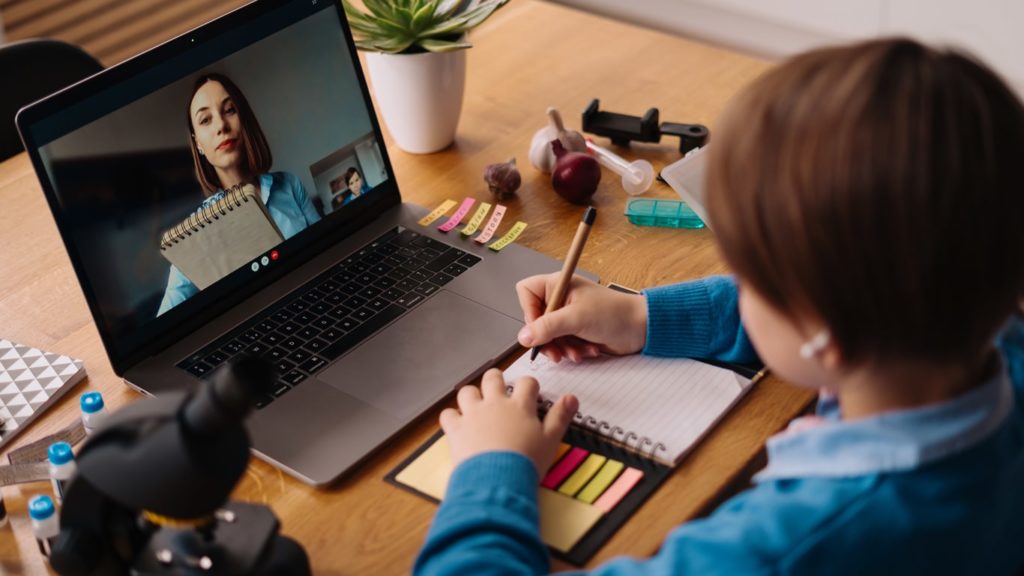
In this dynamic world, if there is one thing we are sure of, it is technology. Technology is here to stay, so it’s only sensible on our part to prepare the future generation. What’s a better way than integrating technology with teaching to create an environment for students that will help them in the future? In fact, forget about the regular times, consider this pandemic situation, where what we are saying is truer than it could ever be.
Technology has been our only hope to resume everyday life with the difference of going digital. Teaching technology has helped us with innovative tools and methods to teach students. Thus, in this study, we will take a closer look at what teaching technology is along with its examples and applications.
What is teaching technology?
Teaching technology is the use of technological processes and resources to facilitate learning and improve performance. This enhances the learning experience of the students dramatically. Devices such as smartphones and laptops have become increasingly popular, so integrating them into education turns out to be beneficial.

Firstly, it makes information easily accessible. Secondly, teaching technology makes it feasible to fulfill the individual learning needs of students. Lastly, it gives flexibility that makes learning more enjoyable.
Examples of teaching technology
Now it’s time to look at prominent representatives of teaching technology. The following are the examples of teaching technology:
1. Virtual reality
Virtual reality technology allows teachers to make the learning experience more immersive for students. The virtual interactive content allows them to explore 360 degrees of locations around the globe. They can learn about the world without leaving the classroom. It gives them experience, which is an effective way of learning.
There are various constraints such as costs and pandemic restrictions that make real field trips impossible. Virtual reality allows teachers to take students on field trips nonetheless, educating them while saving time and lots of money.
2. Artificial intelligence
In our previous posts, we have talked at length about the use of artificial intelligence technology in automation.
Traditionally, teachers used to spend hours on grading and worksheet assessments. With the introduction of AI in teaching, these tasks can be automated. That way, teachers can have more time in hand to focus on improving the learning experience for the students. To sum up, artificial intelligence automates administrative tasks.
3. Cloud technology
Gone are the days when your learning opportunities were limited to the available physical resources. Transformational teaching technology, i.e., cloud technology, introduced virtual resources. Now you can be at any location on the globe and still be able to enroll in courses. Teachers can make their educational content available to distant learners.
Also, cloud computing offers the pay-as-you-go option, so it saves costs for both teachers and learners. Moreover, learners can simply connect to the internet, and they can have the learning resources at their fingertips.
4. Podcasts
Have you ever wondered why podcasts became mainstream? The most popular reason is that you don’t require paying full attention when you are listening to podcasts. This is not the case when you are reading or watching content.
Podcasts allow teachers to create educational content their students can listen to on the go. They can hear audio lessons while commuting or performing a variety of other tasks outside of school. The portability gives them the ultimate convenience, all the while promoting flexible learning.
Applications of teaching technology
Now that we have covered the examples of teaching technology, it’s time to delve into its application. Listed below are the applications of teaching technology:
1. Teaching technology improves communication
Fetching resources and building connections has become simpler with the internet and various software. Teachers and students are more in sync with the educational plans than they ever were. They can easily communicate with the students and even take feedback from them to create lesson plans.
Not only communication, but teaching technology has also greatly influenced teacher-student relationships. Since teachers are easily available, students can get their doubts cleared up and ask for suggestions to develop their study plans.
2. Increases collaboration
Teaching technology provides a platform for teachers and students where they can share their work. The collaborative tools make it possible to organize the study materials. Additionally, it allows them to make a note of their insights, which they can then transform into valuable ideas. The interactive feature of teaching technology engages students and encourages them to collaborate.
A few examples of tools used for collaboration are emails, Google Drive, and Microsoft Office. Do you think integrating technology is the next best thing to turn dull subjects into interesting ones? We sure do.
3. Boosts productivity
We pointed out earlier that teaching technology helps us automate tasks. The obvious advantage of automation is increased productivity. Also, we have a learning management system (LMS) that allows us to manage the complete processes efficiently. This significantly cuts down on unnecessary efforts and time.
Furthermore, all the resources are made available to the students, i.e., they can access them from anywhere at any time. Teachers can even send reminders and check with students if required.
4. Nurtures creativity
It’s important to foster creativity among students, as it allows them to think outside the box. If you ponder about it, you will realize nurturing creativity is essential to problem-solving. Thus, teachers are using teaching technology to assess students accurately.
This gives them insights into how well they are doing in various subjects. It further helps them modify the learning plans for the students. Also, there is plenty of content available online, including arts and music, that students can choose to learn to become more creative.
Teaching technology is the bridge between knowledge and imagination, empowering educators to turn information into inspiration for the curious minds of tomorrow.
Tech Quintal
5. Provides personalized learning opportunities
We are becoming more aware of differences in the learning styles of students with the increasing research studies. These studies have highlighted the importance of prioritizing their learning style to enhance their learning experiences.
Teaching technology allows us to work towards achieving this goal. It facilitates personalizing the study material to incorporate students’ learning styles. Providing a tailor-made learning experience to students improves their performances and helps them retain more information. Plus, they get to learn at their own speed.
FAQs of Teaching Technology
Teaching technologies can potentially replace traditional classrooms. While technology may not replicate the warmth of a teacher’s smile or the energy, it bridges the gap with interactive experiences. Virtual reality field trips, online discussion forums, and real-time feedback sessions are just the tip of the iceberg. It doesn’t replace; it enhances and expands.
Teaching technology is important because it prepares students for a digital future. It makes learning more engaging, and can provide personalized education experiences.
Yes, the pandemic has made technology essential for remote learning. During the pandemic, teaching tech helped to continue education even when schools were closed.
Teachers can take professional development courses, attend workshops, and join online communities to learn about the latest tools and strategies. It is important for teachers to keep up with the latest technical advancements in order to improve their teaching methods.
Technology can make aspects of teaching more efficient, like grading or sharing resources, but it also requires teachers to learn new skills and adapt their teaching styles. If they don’t do it, then the effectiveness will be reduced considerably.
In the near future, expect to see more AI and personalized learning, improved virtual and augmented reality experiences, better tools for measuring student progress, etc.